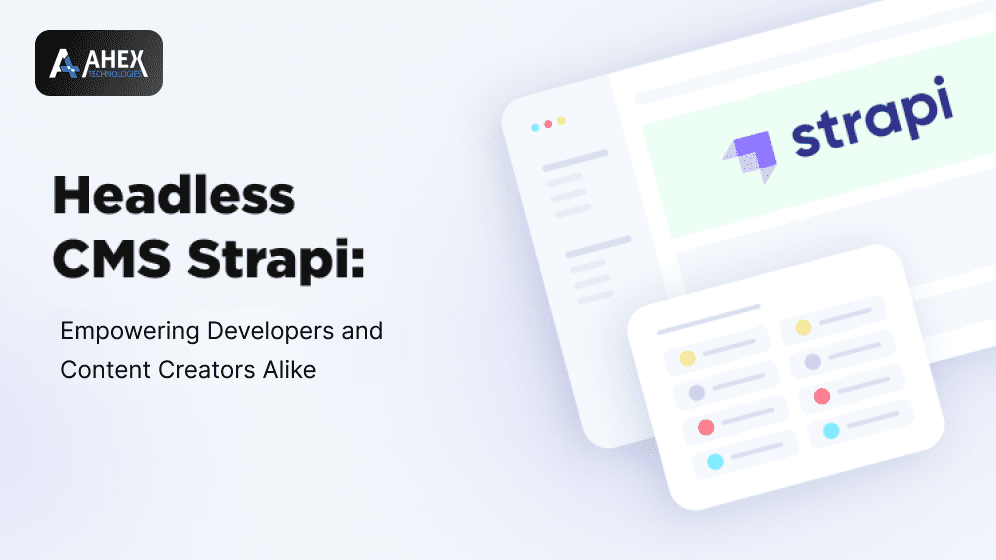
Table of Contents
- Introduction
- Understanding Headless CMS
- Introducing Strapi
- Features and Benefits of Strapi
- Empowering Developers with Customization and Flexibility
- Enabling Content Creators with User-Friendly Interface
- Seamless Integration with Any Frontend Technology
- Scalability and Performance Optimization
- Security and Access Control
- Conclusion
- FAQs
Introduction
As the digital landscape continues to evolve, the need for flexible and efficient content management systems (CMS) has become paramount. Headless CMS has emerged as a popular solution, decoupling the frontend presentation layer from the backend content management functionality. Among the various headless CMS options available, Strapi stands out as the ultimate choice. This article explores why Strapi is the ultimate headless CMS, empowering both developers and content creators alike.
Understanding Headless CMS
Traditional CMS platforms tightly couple the frontend and backend, limiting flexibility and hindering seamless integration with new technologies. Headless CMS, on the other hand, separates the content management functionalities from the presentation layer. It allows developers to build and manage content independently, delivering it via APIs to various frontend applications and channels.
Introducing Strapi
Strapi is an open-source headless CMS that offers a comprehensive set of features and a user-friendly interface. It enables developers to create, manage, and distribute content seamlessly, while providing content creators with an intuitive platform to create and edit content without technical dependencies. With its flexibility, customization options, and extensive plugin ecosystem, Strapi has gained popularity as the ultimate headless CMS solution.
Features and Benefits of Strapi
- Flexible Content Modeling: Strapi allows developers to define custom content structures and relationships, providing complete control over the content model. This flexibility ensures that the CMS can adapt to the specific needs of any project.
- API-First Approach: Strapi follows an API-first approach, making it easy to expose content via RESTful or GraphQL APIs. This allows developers to deliver content to multiple channels, including websites, mobile applications, and IoT devices.
- Rich Text Editing: Strapi offers a powerful WYSIWYG editor and markdown support, enabling content creators to format and style their content without any technical knowledge.
- Media Management: Strapi provides robust media management capabilities, allowing content creators to upload, organize, and manipulate media files effortlessly. This ensures efficient handling of images, videos, and other media assets.
- Role-Based Access Control: Strapi offers granular access control, allowing administrators to define user roles and permissions for content creation, editing, and publishing. This ensures that content creators have the appropriate level of access and security.
- Localization and Internationalization: Strapi supports multi-language and multi-region content management, making it easy to create and manage localized content for global applications.
- Webhooks and Integrations: Strapi seamlessly integrates with third-party services and systems through webhooks and plugins. This allows developers to extend the CMS functionality and connect with various tools and services for enhanced automation and productivity.
Empowering Developers with Customization and Flexibility
Strapi empowers developers by providing a highly customizable and extensible CMS solution. Developers can leverage the Strapi plugin ecosystem or build custom plugins to extend the CMS functionality according to project requirements. The ability to define custom content structures, create dynamic API endpoints, and implement business logic through serverless functions or custom middleware allows developers to build tailored and efficient content management systems.
Enabling Content Creators with User-Friendly Interface
Strapi prioritizes the user experience for content creators, offering a user-friendly interface for content creation and management. Content creators can easily create, edit, and organize content using the intuitive admin panel. The WYSIWYG editor, drag-and-drop capabilities, and media management features simplify the content creation process, empowering non-technical users to contribute and collaborate effectively.
Seamless Integration with Any Frontend Technology
Strapi’s API-first approach ensures seamless integration with any frontend development technology or framework. Whether it’s a single-page application, a mobile app, or a static website generator, Strapi’s flexible APIs provide the necessary content to power the frontend. Developers can choose their preferred frontend technology without being restricted by the CMS, enabling them to deliver exceptional user experiences.
Scalability and Performance Optimization
Strapi is designed to scale effortlessly, accommodating projects of any size. It optimizes performance through caching mechanisms, allowing for efficient content delivery and reducing server load. Additionally, Strapi’s ability to handle high traffic loads and its compatibility with cloud platforms ensures scalability and smooth operation even during peak usage periods.
Security and Access Control
Strapi prioritizes security and offers robust access control features. It provides authentication mechanisms, role-based access control, and the ability to secure APIs with authentication tokens. Content creators can be assigned specific roles and permissions, ensuring that only authorized users can create, edit, and publish content. Strapi also actively addresses security vulnerabilities through regular updates and a responsive development community.
Conclusion
Strapi emerges as the ultimate headless CMS solution, empowering both developers and content creators in the content management process. With its flexibility, customization options, user-friendly interface, seamless integrations, scalability, and security features, Strapi provides a powerful and efficient platform for managing content in modern digital applications.
FAQS
Yes, Strapi is suitable for projects of all scales. Its flexibility allows it to adapt to the specific needs of small-scale projects while offering scalability for larger ones.
Absolutely. Strapi’s API-first approach enables easy integration with existing frontend applications, regardless of the technology stack.
Yes, Strapi provides authentication mechanisms and role-based access control, allowing administrators to define user roles and permissions.
Yes, Strapi supports multi-language and multi-region content management, making it easy to create and manage localized content.
Yes, Strapi can be used for e-commerce applications. It provides the necessary tools for content management and can be integrated with e-commerce platforms or frameworks for a complete solution.








